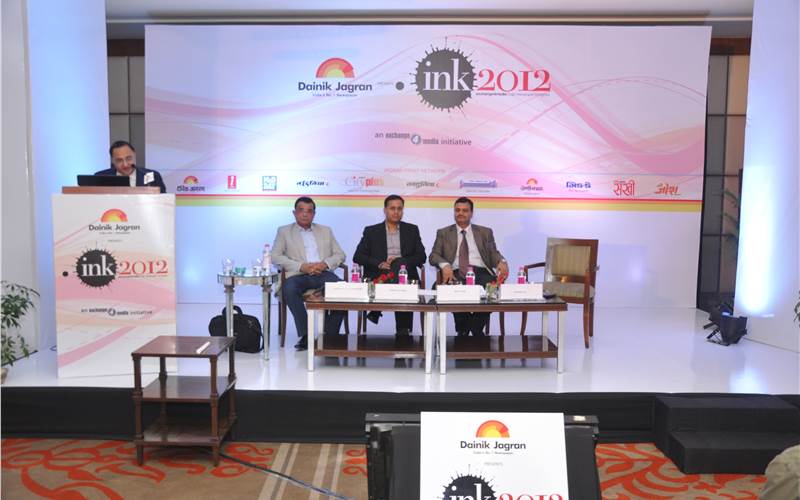The head honchos of the newspaper industry feel demographics and consumption patterns are rewriting the newspaper growth story in India, reports Rahul Kumar and Supreeth Sudhakaran
The Indian Newspaper Kongress (Ink 2012) organised by the Exchange4Media group in Gurgaon on 20 July, brought together several stalwarts of the newspaper industry who vociferously rebutted the prospects of the decline of print in India.
Arunabh Das Sharma, president, Bennett, Coleman & Co
Print is not concentrated to metros alone. Demographics and consumption patterns in the non-metros are driving the growth. The need is to be future-ready. In the long-term business models, digital seamless models and paid content would gain traction.
DD Purkayastha, managing director and CEO, ABP Group
Digital technology and alternate channels are growing rapidly in India and will continue to maintain pressure on the print industry, due to a few structural factors. Still, the print industry will continue to grow very likely for the next 15 years; albeit, at a slower pace.
Navin Suri, chief editor, The Daily Milap
Urdu language newspapers have perfected the art of getting personal with the readers, that is of utmost important to engage the readers. With the vastness of languages we have in the country there is no such thing as national, regional or local newspaper. Brands and local newspapers have to be in partnership. The gap between metros and rural areas must be bridged so that brands understand how to sell better.
Sunil Mutreja, executive director, Amar Ujala
Digital taking over advertising revenue from print is a far-fetched concept. There is need to redefine innovation from the publisher point of view. Innovations are risky. If newspapers are ready to be accountable and brands are ready to partner with them, a lot more of innovations would take shape.
Mohit Jain, executive president - supply chain, Times of India Group
The print advertising has grown at 11-12% CAGR, which is a very healthy trend. Over the last few years, all the major newspaper publishers have grown both in their top-line and bottom-line. Print is not losing readers; it is losing intensity and engagement. This is where we have to concentrate more.
Varghese Chandy, senior general manager - marketing operations, Malayala Manorama
I am not comfortable with the word local. Regional is the new national. This is the kind of strength regional newspapers command which has put them in the frontline. The brands need to understand the power of the regional media and perhaps a currency need to be developed to club advertising revenue from online and print.
Jwalant Swaroop, COO-publishing, Lokmat (from 1 August: consultant - strategic planning, Lokmat)
While digital is making huge inroads, newspaper distribution is a big challenge for newspaper publishers. In Pakistan, newspapers are premium products available for as high as PKR 35. At the end of the day, everything boils down to what is the ROI.
Rahul Kansal, excutive president, Bennett, Coleman & Co
By and large print has been able to hold its share vis-a-vis television when it comes to advertising revenues. In future, we would be looking to synergise our English-speaking and metro readers’ strength with our regional strengths.
Sarmad Ali, managing director, Jang Media Group (Pakistan)
Newspaper publishers should accept that we have failed to connect with the younger audience. In India and Pakistan at least, newspapers will remain as newspaper brands, whether they would be on paper or on digital, is yet to be seen; but we should be confident of our brands and products.














 See All
See All